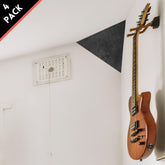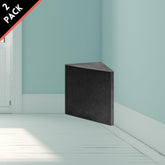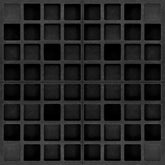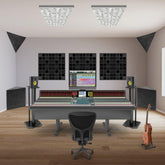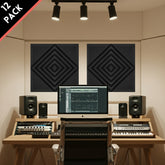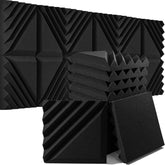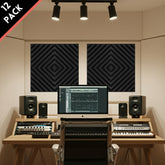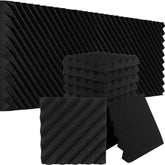Advanced EQ Guide: Sculpting Sound with Dynamic, M/S, and Linear Phase EQ
Sculpting Sound: Advanced EQ Techniques and the Physics of Frequency
If the volume fader is the most powerful tool in mixing, the Equalizer (EQ) is undoubtedly the most dangerous. In the hands of a master, an EQ can clarify a muddy mix, add sparkle to a dull vocal, and fit instruments together like a perfect jigsaw puzzle. But in the hands of a novice, it can quickly turn a recording into a phase-distorted, harsh, and unnatural mess. Many producers treat EQ as a corrective tool—a digital janitor meant to clean up mistakes. However, true advanced equalization is not just about cleaning; it is about sculpting.
Moving beyond the basic "bass, mid, treble" mindset requires a shift in perspective. We must stop looking at frequency curves as arbitrary lines on a screen and start understanding them as energy. Every cut and every boost alters the phase relationship of your audio. Furthermore, the decisions you make with an EQ are inextricably linked to the environment you are listening in. This guide goes beyond the basics to explore the advanced techniques of Dynamic, Mid-Side, and Linear Phase EQ, while addressing the elephant in the room: the physics of your actual room.

The Frequency Spectrum: A Map of Conflict
Before we touch a knob, we must understand the battlefield. The frequency spectrum (20Hz to 20kHz) is limited real estate. When too many instruments fight for the same territory, we get "masking"—where louder sounds hide quieter ones. The most notorious war zone in any mix is the "Low Mids" (200Hz - 500Hz). This is where the fundamental frequencies of snare drums, guitars, vocals, and keyboards often pile up. In a well-treated room, this buildup sounds like "warmth." In a poor room, it sounds like "mud."
A critical mistake many engineers make is aggressively cutting this region to clear up the mud, only to find the mix sounds thin and hollow on other systems. This happens because your room's acoustics might be artificially amplifying that range, tricking you into cutting frequencies that aren't actually excessive in the source audio. Before performing surgical EQ, ensure your monitoring environment is telling you the truth by utilizing proper acoustic panels at reflection points. You cannot sculpt a statue in the dark; you need to see (hear) the material clearly.
The Golden Rule: You Cannot EQ a Null
Here is a scientific reality that saves countless hours of frustration: You cannot fix room acoustics with EQ. A common scenario involves a producer noticing that the bass guitar completely disappears at the note F# (approx. 92Hz). They grab an EQ and boost 92Hz by +12dB. It still sounds quiet, so they push it to +20dB. Suddenly, the speaker creates distortion, but the bass is still weak.
This is caused by "destructive interference" or a standing wave null in your room. The sound wave bouncing off the back wall is meeting the direct sound wave perfectly out of phase, physically cancelling the sound out in the air. No amount of EQ boosting can fix a hole in physics. In fact, boosting it eats up your "headroom," reducing the overall volume potential of your track. The only solution to this physical phenomenon is physical treatment, specifically high-density bass traps designed to absorb that reflected energy so it doesn't return to cancel out the direct sound.
Dynamic EQ: The Intelligent Fader
Traditional EQ is static. If you cut 3kHz on a vocal to reduce harshness, that cut is applied constantly—even when the singer is whispering and actually needs that presence. This is where Dynamic EQ changes the game. Think of it as a mix between an EQ and a Compressor. It allows you to set a threshold, so the EQ cut (or boost) only engages when that specific frequency exceeds a certain volume.
This is invaluable for modern mixing. For example, a bass guitar might sound perfect in the low notes but get "honky" or "boxy" when the player hits high notes. A static cut would ruin the low notes. A Dynamic EQ can be set to only tuck down the boxy frequencies when the player moves up the neck. It is also the secret weapon for "De-essing" (controlling sharp 'S' sounds in vocals) and locking a kick drum to a bass guitar (ducking the bass only at the specific frequency of the kick's thump).
Mid-Side (M/S) EQ: The 3D Glasses of Audio
Most beginners work in Stereo mode (Left/Right). However, Advanced engineers often think in Mid/Side. "Mid" contains all the information in the center of the stereo image (usually Kick, Snare, Bass, Lead Vocal). "Side" contains the differences between left and right (Reverb, wide synths, double-tracked guitars). Mid-Side EQ allows you to process these elements separately.
One of the most powerful techniques for cleaning up a mix is "monoing the low end." By using a High-Pass filter only on the "Side" channel (cutting everything below 100Hz-150Hz), you remove muddy, phase-incoherent rumble from the sides of your mix. This instantly tightens the center image and makes the bass punchier. Conversely, boosting the "High Shelf" only on the Side channel can add "air" and width to a mix without making the vocals (which are in the Mid) sound piercing or harsh. It creates a sense of expensive width that static stereo EQ cannot achieve.

Linear Phase EQ: Surgical Precision with a Cost
Analog EQs and their digital emulations introduce "phase shift." When you cut or boost a frequency, the timing of that frequency shifts slightly relative to others. In most musical contexts, this "smearing" sounds natural and even desirable—it's the sound of classic rock and pop. However, in mastering or when processing multiple microphones on a single source (like drums), this phase shift can cause issues.
Linear Phase EQ uses complex mathematics to ensure that all frequencies pass through the processor with the exact same time delay, preserving the phase relationship perfectly. This makes it incredibly transparent for surgical cuts. However, physics demands a trade-off. Linear Phase EQs introduce "pre-ringing"—a faint, reverse-echo artifact that happens slightly before a transient hits. Therefore, you should avoid using Linear Phase EQ on transient-heavy sources like snare drums or aggressive percussion, as it can smear the impact. It is best reserved for the mastering stage or for delicate adjustments on sustained pads and vocals.
Practical Application: Boxiness, Harshness, and Air
Identifying problems is half the battle. "Boxiness" typically lives in the 300Hz to 600Hz range. It sounds like someone singing inside a cardboard box. This is often an accumulation of room resonance in the recording phase. A narrow "bell" cut here often unveils the sound. "Harshness" lives in the 2kHz to 5kHz range—the most sensitive part of human hearing. Be very careful boosting here; while it adds excitement, it causes ear fatigue very quickly.
"Air" or "Brilliance" is found above 10kHz. Boosting this adds an expensive sheen, but be aware of the "Signal Chain." If you recorded with a budget microphone in a noisy room, boosting high frequencies will simply boost the hiss and room noise. This brings us back to the importance of getting it right at the source. A dry, controlled recording achieved with a comprehensive room acoustic solution accepts EQ much better than a noisy, reverb-heavy recording.
Conclusion: Trust Your Ears, Verify Your Environment
Advanced EQ is not about following a recipe; it is about reactive listening. It is the ability to close your eyes, visualize the soundstage, and carve out space for each element to breathe. The tools—Dynamic, Mid-Side, Linear Phase—are powerful, but they are secondary to your judgment.
Remember that your judgment is filtered through your room. If you find yourself constantly struggling with the low end, fighting mud, or producing mixes that don't translate, stop buying plugins. Look around you. The best EQ move you can make might be hanging a bass trap in the corner. When your environment is truthful, your EQ decisions become effortless, and your music finally sounds the way you imagined it.
Frequently Asked Questions (FAQ)
Should I EQ before or after compression?
This is the classic audio debate. The general rule is: "Subtractive EQ before compression, Additive EQ after compression." If you have a lot of low-end rumble or an annoying resonance, cut it before the compressor. Otherwise, the compressor will trigger off that junk noise and pull down the volume of the whole track. Use EQ after compression to shape the tone and add shine, as the compressor will have smoothed out the dynamics, allowing for broader strokes.
What is "Subtractive EQ" and why is it recommended?
Subtractive EQ means cutting bad frequencies rather than boosting good ones. It is generally preferred because boosting frequencies eats up "headroom" (volume limit) and can introduce phase distortion. Cutting is usually more transparent. For example, instead of boosting the highs to make a sound brighter, try cutting the muddy low-mids. The result is often perceived as brighter, but cleaner.
Can I use EQ to fix a bad recording?
You can polish a bad recording, but you cannot fix it. If a vocal was recorded in a tiled bathroom, cutting the "roomy" frequencies (usually low-mids) will help, but it will leave the vocal sounding thin and distant. If a microphone was placed poorly and captured too much bleed, EQ cannot separate the sounds. This highlights why acoustic treatment and mic placement are vastly more important than post-production processing.
What is the "High-Pass Filter" trick?
A High-Pass Filter (HPF) lets high frequencies pass and cuts low frequencies. A common pro technique is to apply a gentle HPF to everything in the mix except the kick drum and bass guitar. Even a hi-hat or a vocal has low-frequency rumble (from footsteps, air conditioning, etc.) that you can't hear, but it adds up to eat your headroom. Cleaning this up creates a much tighter, louder mix.
Why do my EQ boosts sound unnatural?
This is often due to boosting too narrowly (high Q) or boosting too much. Our ears are accustomed to natural sounds, which rarely have sharp spikes in frequency. When boosting, try using a wide "Q" (bandwidth) for a more musical, gentle lift. Use narrow Q settings only for cutting specific problematic resonances. Also, check your room—you might be boosting a frequency that your room is cancelling out, leading you to over-boost.
ABOUT AUTHOR
House Live Engineer of Free Bird, a live house with the history of South Korea's indie music scene.
Single album/Regular album/Live recording, Mixing and Mastering experience of various rock and jazz musicians



